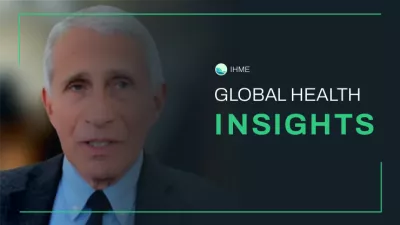Health financing
Our health financing work examines health spending from governments, individuals, and other channels to inform policymakers about where resources for health are coming from and where they are going.
Key findings
Estimates from our latest report, Financing Global Health 2023: The Future of Health Financing in the Post-Pandemic Era shows how global health spending is dropping after reaching an all-time high during the COVID-19 pandemic.
The COVID-19 pandemic prompted a shift in health funding away from long-standing focus areas like HIV/AIDS and child health.
However, 2023 marked a return in momentum for those areas. Between 2021 and 2023, funding for HIV/AIDS increased by 53.7% while funding for COVID-19 dropped by 68.6%. Funding for neonatal and child health, reproductive and maternal health, malaria, and tuberculosis also increased during that time period.

Health spending per person will continue increasing in high-income countries, but stagnate in more vulnerable regions.
For example, in the United States, an average of $13,000 was spent per person on health care in 2021, and that number is projected to reach $20,200 by 2050. However, several countries in Central and Eastern Africa spent under $40 per person in 2021, and by 2050 are expected to remain under $50 per person.

Explore patterns of global health financing flows from 1990 to 2050.

What’s new in Financing Global Health 2023?
Since 2009, the Financing Global Health (FGH) report has provided policymakers with critical information on current and future health financing and spending. Our most recent edition, Financing Global Health 2023, expands on, and adds new estimates to, topics like pandemic preparedness, future health spending, and development assistance for health.
New estimates of development assistance for health
IHME provides estimates of development assistance for health through 2023, showing how trends have changed since the height of the COVID-19 public health emergency in 2020 and 2021.
A look at countries’ debt following the COVID-19 pandemic
During the pandemic, many countries’ debt increased as they borrowed money to help their people weather economic hardship and get vaccinated against COVID-19.
Improved forecasts of health spending through 2030
IHME has updated its forecasts of development assistance for health, government health spending, and total health spending based on factors including countries’ debt and changing priorities.



